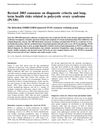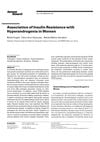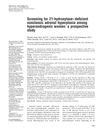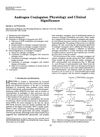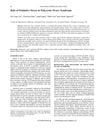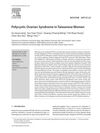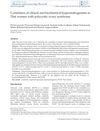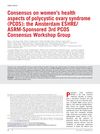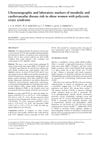Diagnostic Criteria for Polycystic Ovarian Syndrome
January 2006
in “
Endocrine journal
”
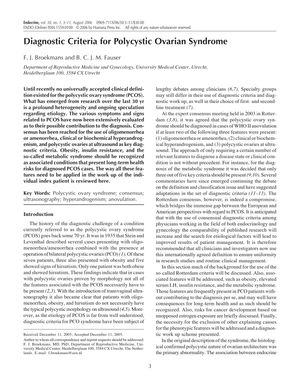
TLDR To diagnose Polycystic Ovarian Syndrome, two out of three signs—irregular periods, high male hormone levels, or cysts on the ovaries—are needed.
The 2006 document details the diagnostic criteria for Polycystic Ovarian Syndrome (PCOS), based on the 2003 Rotterdam consensus, which requires the presence of at least two of the following three features for a diagnosis: oligomenorrhea or amenorrhea, clinical or biochemical hyperandrogenism, and polycystic ovaries on ultrasound. It highlights the association of PCOS with obesity, insulin resistance, and metabolic syndrome, which pose long-term health risks. The document also discusses the prevalence of hirsutism (approximately 60%), acne (one-third of cases), and male pattern hair loss in PCOS, which requires a familial predisposition. It emphasizes the need to exclude other conditions like congenital adrenal hyperplasia, Cushing's syndrome, and androgen-producing neoplasms that can mimic PCOS symptoms. The Rotterdam criteria are recommended for uniformity in research and clinical management, acknowledging the heterogeneity of PCOS symptoms and endocrine profiles, and the potential increase in PCOS prevalence to up to 10% among the general female population.


